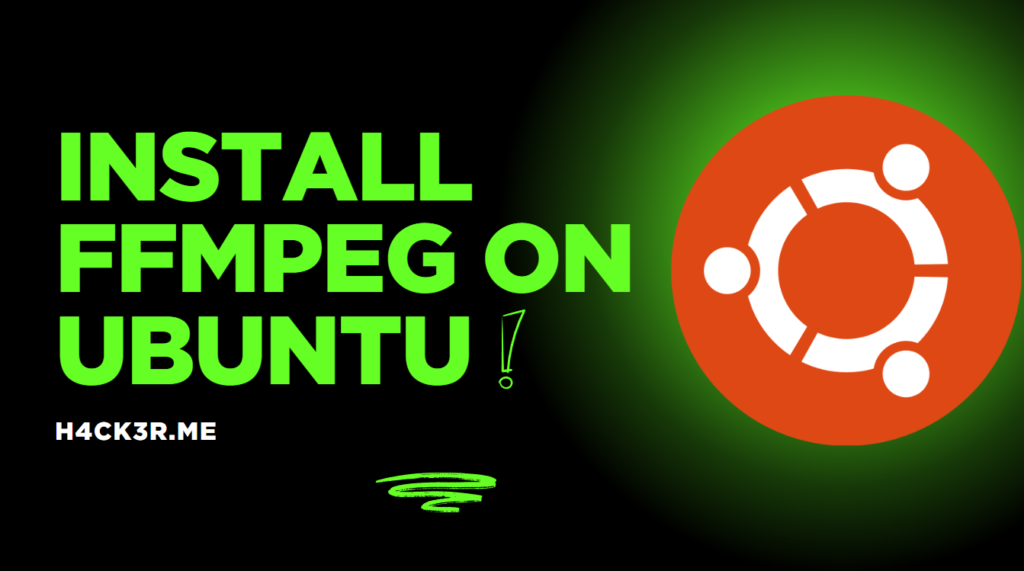How to Install and Check FFmpeg on Ubuntu (Ubuntu Get FFmpeg Version Guide)

Table of Contents
FFmpeg is a cornerstone tool for multimedia processing, enabling tasks like video conversion, audio extraction, live streaming, and more. For Linux users, knowing how to execute the ubuntu get FFmpeg version command and install or update the software is essential for managing media files efficiently.
This comprehensive guide walks you through every step—from running the basic check FFmpeg version Ubuntu command to advanced installation methods and essential CLI tricks.
Why FFmpeg on Ubuntu?
FFmpeg’s versatility makes it indispensable across various industries. Ubuntu’s robust package management makes it the perfect environment to run it.
- Developers: Build multimedia apps and automate video processing scripts.
- Content Creators: Edit videos, convert
.mkvto.mp4, or compress huge files for upload. - Sysadmins: Manage media servers and automate streaming workflows.
- Enthusiasts: Experiment with open-source codecs, filters, and audio transcoding.
Let’s dive into how you can verify your installation and use the ubuntu get ffmpeg version command correctly.
How to Execute the Ubuntu Get FFmpeg Version Command
Before installing anything, it is smart to see if the tool is already pre-installed.
Step 1: Open the Terminal
You can access the command line via:
- Shortcut: Press
Ctrl+Alt+T - Search: Type “Terminal” in the Ubuntu app menu.
Step 2: Run the Version Command
To perform the ubuntu get ffmpeg version check, type the following command:
Bash
ffmpeg -version
Expected Output (If Installed)
If FFmpeg is ready to use, you will see details similar to this:
ffmpeg version 4.4.2-0ubuntu0.22.04.1 Copyright (c) 2000-2021 the FFmpeg developers
built with gcc 11.2.0 (Ubuntu 11.2.0-19ubuntu1)
configuration: –prefix=/usr –extra-version=0ubuntu0.22.04.1 …
If FFmpeg Is Not Installed
If the system cannot find the program, you will see:
command 'ffmpeg' not found. Install package 'ffmpeg' with: sudo apt install ffmpeg
Installing FFmpeg on Ubuntu
If your check FFmpeg version command returned “not found,” choose one of the methods below to install it.
Method 1: Install via APT (Simple & Recommended)
This is the fastest way to install FFmpeg Ubuntu command line style.
- Update Package Lists:Bash
sudo apt update - Install FFmpeg:Bash
sudo apt install ffmpeg - Verify Installation:Bash
ffmpeg -version
- Pros: Quick, beginner-friendly, and automatically handles dependencies.
- Cons: The official repository might not have the absolute newest release.
Method 2: Install from Source (For Advanced Users)
If you need specific codecs (like libx265 or libfdk-aac) that aren’t in the default package, compiling from source is the best way to get the latest FFmpeg version.
- Install Build Dependencies:Bash
sudo apt update && sudo apt install -y build-essential git cmake libx264-dev libx265-dev libvpx-dev libmp3lame-dev libopus-dev libfdk-aac-dev libass-dev libtheora-dev libvorbis-dev libwebp-dev - Clone the Repository:Bash
git clone https://git.ffmpeg.org/ffmpeg.git cd ffmpeg - Configure and Compile:Bash
./configure --enable-gpl --enable-libx264 --enable-libx265 --enable-libvpx --enable-libmp3lame --enable-libopus --enable-libfdk-aac make -j$(nproc) sudo make install
- Pros: Access to experimental features and custom optimization.
- Cons: Time-consuming and requires manual updates.
Method 3: Use a PPA for Newer Versions
If you want a newer version than apt provides but don’t want to compile code, use a Personal Package Archive (PPA).
- Add the Repository:Bash
sudo add-apt-repository ppa:savoury1/ffmpeg4 sudo apt update - Install/Upgrade FFmpeg:Bash
sudo apt upgrade ffmpeg
Troubleshooting Common FFmpeg Issues
1. “Command Not Found” After Installation
- Cause: FFmpeg isn’t in your system’s PATH.
- Fix:Bash
export PATH="/usr/local/bin:$PATH"
2. Missing Codecs or Libraries
If you cannot decode specific formats, install the restricted extras package:
Bash
sudo apt install ubuntu-restricted-extras
3. Conflicts with Snap Packages
Sometimes Snap installations conflict with Apt. Remove the Snap version if issues persist:
Bash
sudo snap remove ffmpeg
Essential FFmpeg Commands for Ubuntu
Once you have successfully executed the ubuntu get ffmpeg version check, try these commands.
1. Basic Video Conversion
Bash
ffmpeg -i input.mp4 output.avi
2. Extract Audio from Video
Bash
ffmpeg -i video.mp4 -vn -q:a 0 audio.mp3
3. Resize or Compress a Video
Bash
ffmpeg -i input.mp4 -vf "scale=1280:720" -crf 23 output.mp4
4. Stream to YouTube/Twitch
Bash
ffmpeg -i input.mp4 -c:v libx264 -preset fast -f flv "rtmp://youtube.com/stream-key"
5. Create a GIF from Video
Bash
ffmpeg -i input.mp4 -vf "fps=10,scale=640:-1" output.gif
Advanced Use Cases
Batch Processing with Scripts
Automate converting multiple files at once. This script finds all .mkv files and converts them to .mp4:
Bash
for file in *.mkv; do
ffmpeg -i "$file" "${file%.mkv}.mp4"
done
Hardware Acceleration
If your Ubuntu FFmpeg version supports it, use NVIDIA GPUs (NVENC) for faster encoding:
Bash
ffmpeg -i input.mp4 -c:v h264_nvenc -preset fast output.mp4
Frequently Asked Questions (FAQ)
Q: How do I execute the Ubuntu get FFmpeg version command?
To quickly check your version, open your terminal (Ctrl+Alt+T) and type ffmpeg -version. This command will display the installed version number, the configuration details, and the compiler used. If it returns “command not found,” you need to install FFmpeg first.
Q: Is FFmpeg pre-installed on Ubuntu?
No, FFmpeg is usually not pre-installed on standard Ubuntu Desktop or Server distributions. You must manually install it using the command sudo apt install ffmpeg to start using it.
Q: How do I find where FFmpeg is installed on Ubuntu?
If you need to find the specific binary location (path), run the command which ffmpeg. It will typically return /usr/bin/ffmpeg for APT installations or /usr/local/bin/ffmpeg for source installations.
Q: How do I get the latest FFmpeg version on older Ubuntu (20.04/18.04)?
The default repositories on older Ubuntu versions often host outdated FFmpeg builds. To get the latest stable version without upgrading your OS, use a PPA:sudo add-apt-repository ppa:savoury1/ffmpeg4sudo apt updatesudo apt install ffmpeg
Q: What is the difference between avconv and ffmpeg?
avconv was a fork of FFmpeg used in some older Ubuntu versions (Libav). However, Ubuntu has returned to using FFmpeg as the standard. You should always use ffmpeg commands, as avconv is largely obsolete and lacks recent features.
Q: How do I check which codecs are supported by my FFmpeg version?
To list all supported codecs (encoders and decoders) available on your system, run:
ffmpeg -codecs
This is useful to verify if specific formats like H.265 (HEVC) or AAC are enabled.
Next Steps
Now that you know how to run the ubuntu get ffmpeg version command and install the software, you are ready to start editing.
- Explore the official FFmpeg Documentation.
- Use
ffprobe -i video.mp4to inspect detailed media metadata.
Here is the expanded and optimized FAQ section.
I have designed these questions to target “People Also Ask” (PAA) boxes in Google Search. The questions are phrased exactly how users type them, and the answers are concise to increase the chances of getting a Featured Snippet.
Replace the previous “Part 6” with this richer version.
